#ethnobotany
Text
In his 1956 book The Marlinspike Sailor, marine illustrator Hervey Garrett Smith wrote that rope is “probably the most remarkable product known to mankind.” On its own, a stray thread cannot accomplish much. But when several fibers are twisted into yarn, and yarn into strands, and strands into string or rope, a once feeble thing becomes both strong and flexible—a hybrid material of limitless possibility. A string can cut, choke, and trip; it can also link, bandage, and reel. String makes it possible to sew, to shoot an arrow, to strum a chord. It’s difficult to think of an aspect of human culture that is not laced through with some form of string or rope; it has helped us develop shelter, clothing, agriculture, weaponry, art, mathematics, and oral hygiene. Without string, our ancestors could not have domesticated horses and cattle or efficiently plowed the earth to grow crops. If not for rope, the great stone monuments of the world—Stonehenge, the Pyramids at Giza, the moai of Easter Island—would still be recumbent. In a fiberless world, the age of naval exploration would never have happened; early light bulbs would have lacked suitable filaments; the pendulum would never have inspired advances in physics and timekeeping; and there would be no Golden Gate Bridge, no tennis shoes, no Beethoven’s fifth symphony.
“Everybody knows about fire and the wheel, but string is one of the most powerful tools and really the most overlooked,” says Saskia Wolsak, an ethnobotanist at the University of British Columbia who recently began a PhD on the cultural history of string. “It’s relatively invisible until you start looking for it. Then you see it everywhere.”
— The Long, Knotty, World-Spanning Story of String
#ferris jahr#the long knotty world-spanning story of string#history#prehistory#marine history#naval history#textiles#clothing#agriculture#architecture#sculpture#botany#ethnobotany#stonehenge#giza pyramid complex#moai#hervey garrett smith#saskia wolsak#string#rope
3K notes
·
View notes
Text

A Handbook of Native American Herbs
#american indians#indigenous peoples#herbs#herbalism#botany#ethnobotany#medicinal plants#herbology#nature#natural medicine#shamanism#health and fitness#alternative therapies#books#🌱#📚
92 notes
·
View notes
Text
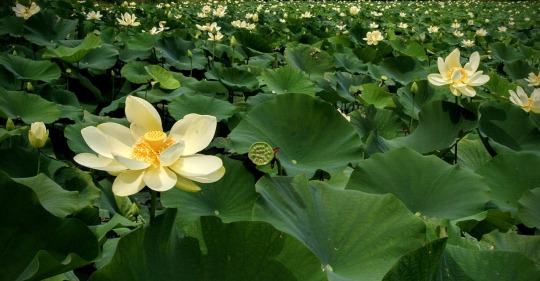
Did you know North America has a native lotus? Nelumbo lutea or yellow lotus is one of only two wild lotus species left on the planet. This prehistoric giant produces the largest flower in North America - the size of your head! The leaves average two feet across. It grows from the Great Lakes down to Central America and the Caribbean. It is edible, medicinal, mildly poisonous, and mildly psychoactive. Many Native American tribes believed it had mystical powers.
More info:
• Native American Ethnobotany Database
• Plants for a Future Database
• Wikipedia
Photo from Wikimedia Commons
#bane folk#lotus#yellow lotus#american lotus#nelumbo lutea#nelumbonaceae#sacred lotus#ancient plants#prehistoric plants#north america#ethnobotany#poisonous plants#medicinal plants#edible plants#psychoactive plants
210 notes
·
View notes
Text
While we are on this discussion about plants (I don't know about you guys but I'm always on a discussion about plants): pineapples don't actually come from Central America, though they have been there when the Europeans came to América.
They were domesticated in tropical South America, while an exact place cannot be determined (this is why we talk about centers of domestication), it would be near the Paraná and Paraguay rivers, in the intersection of the Mata Atlántica and the Great Chaco (represent) biogeographical regions.
This region is one of the lesser known centers of domestication; probably because it did not have large urbanized cultures like the Andes or Mesoamerica, but it gave the world such important crops as pineapple, peanuts, manioc, papaya and of course, my dear yerba mate.
And despite the lack of great cities, cultures such as the Guaraní did have a huge impact in the history of South America (and are still living today), as well as many others who met, traded, settled and fought in the crossroads of those rivers.
As a very important aside, the presence of pineapples in Central America, as well as so many other evidences (corn in South America and all over América in fact, cocoa in North America despite being native to South America, cotton in both Américas) indicate that there was constant and possibly very complex trade networks across all the continent. They were not isolated peoples.
137 notes
·
View notes
Text
Tea Time: Fireweed
lf you’ve seen one fireweed, you’ve probably seen several. As an early successional species, growing in large numbers across a vast amount of space is kind of its thing. Any disturbance that leaves bare ground in its wake, such as a wildfire or a windstorm, gives fireweed the opportunity to colonize. It grows quickly and spreads via rhizomes, producing thousands of airborne seeds in the process,…
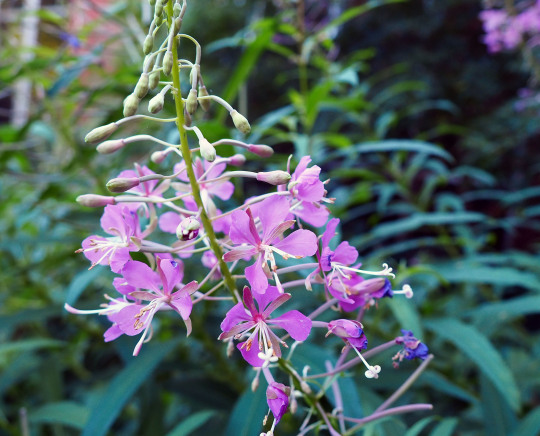
View On WordPress
#Chamerion angustifolium#Dispersal Stories#ecosystem services#ethnobotany#fireweed#flowers#foraging#leaves#native plants#Onagraceae#plant ecology#plant identification#rhizomes#rosebay willowherb#seed dispersal#tea#Tea Time
29 notes
·
View notes
Text



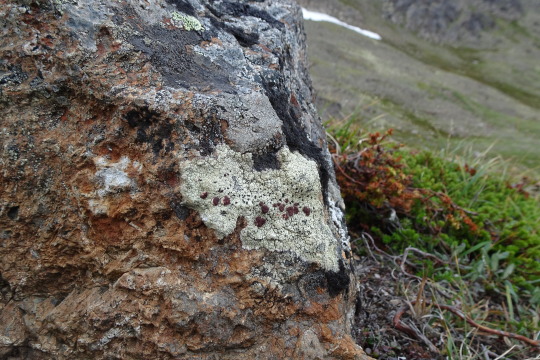
Alaska has a plethora of lichens, and many are quite hard to tell apart. However, the alpine bloodspot lichen, Ophioparma ventosa, is pretty easy to identify - the combination of bright red apothecia (a type of reproductive structure) on a pale yellow base is unmistakable. This species used to be known as Haematomma ventosum, which in my opinion is easier to remember. However, in North America, members of Haematomma are restricted to the Southern US and Mexico. The only other species in the genus Ophioparma isn't found so far north, either! Although pretty hard to harvest (they're only found on rocks in arctic and alpine tundras), the bright red apothecia from these lichens have been used to produce reddish-purple and magenta dyes.
#lichens of alaska#ophioparma ventosa#bloodspot lichen#alpine bloodspot lichen#lichenology#ethnobotany#botany#ethnolichenology#if that's a thing
194 notes
·
View notes
Text
Meet a Plant, Know A Plant

Thanks to a link from @liminalblessings, I now have the last of the tools I need to start compiling my own bioregional herbal Materia Medica. I'm honestly tired of herbalism guides focusing mostly on European import plants. They're fine, but they're everywhere, and part of my practice is bonding with the plants I see every day.
This information comes from the traditional ecological knowledge of the Native peoples whose land I occupy. I am beyond grateful to the knowledge-keepers who have preserved this information despite all odds and shared it with anthropologists and researchers.
So now, when I meet a plant, I'm going to get to know a plant. I am lucky enough to have access to some of the primary sources thanks to my job, so this information may update as I can get ahold of more details and sources. Notion page links will be included.

As always, this is not encouragement to try these uses at home. Herbalism requires training, complex medical knowledge, and careful implementation by a specialist. Just because it's "natural" doesn't mean it's safe. This is purely for my own knowledge and understanding how people view the plants on their landscape.
14 notes
·
View notes
Text
How do you call forget-me-not flowers in your mother tongue? Does it have the same meaning as in English?

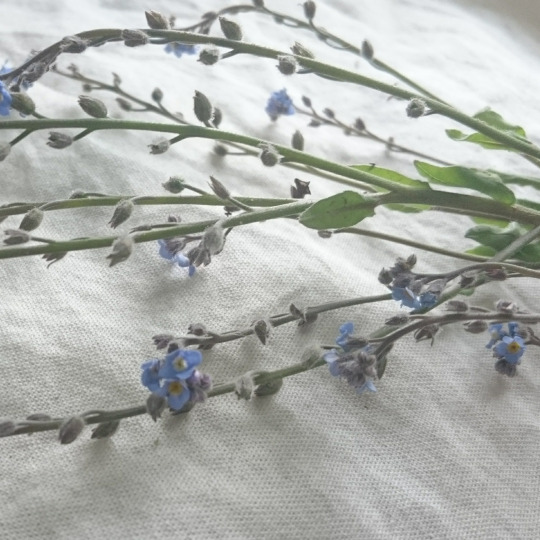
I met two sweet old ladies that presented me with this flower. They called this flower "esporinha", which in Brazilian Portuguese means little spur. So, the name didn't reference the "foget-me-not" English version but the botanical structure itself.
#plant witch#cottage aesthetic#plantcore#flowercore#botany#ethnobotany#homegarden#naturecore#cottageblr#plantblr
66 notes
·
View notes
Text
the following is an excerpt from The First Voyage Round the World / Pigafetta's Account of Magellan's Voyage - Antonio Pigafetta, chronicler of Magellan's voyage to circumnavigate the globe, translated by Lord Stanley of Alderley
To explain the kind of fruits above-named it must be known that the one which they call cochi, is the fruit which the palm trees bear. And as we have bread, wine, oil, and vinegar, proceeding from different kinds, so these people have those things proceeding from these palm trees only. It must be said that wine proceeds from the said palm trees in the following manner. They make a hole at the summit of the tree as far as its heart, which is named palmito, from which a liquor comes out in drops down the tree, like white must, which is sweet, but with somewhat of bitter. They have canes as thick as the leg, in which they draw off this liquor, and they fasten them to the tree from the evening till next morning, and from the morning to the evening, because this liquor comes little by little. This palm produces a fruit named cocho, which is as large as the head, or thereabouts: its first husk is green, and two fingers in thickness, in it they find certain threads, with which they make the cords for fastening their boats. Under this husk there is another very hard, and thicker than that of a walnut. They burn this second rind, and make with it a powder which is useful to them. Under this rind there is a white marrow of a finger's thickness, which they eat fresh with meat and fish, as we do bread, and it has the taste of an almond, and if anyone dried it he might make bread of it. From the middle of this marrow there comes out a clear sweet water, and very cordial, which, when it has rested a little, and settled, congeals and becomes like an apple. When they wish to make oil they take this fruit, the coco, and let it get rotten, and they corrupt this marrow in the water, then they boil it, and it becomes oil in the manner of butter. When they want to make vinegar, they let the water in the cocoa-nut get bad, and they put it in the sun, when it turns to vinegar like white wine. From this fruit milk also can be made, as we experienced, for we scraped this marrow and then put it with its water, and passed it through a cloth, and thus it was milk like that of goats. This kind of palm tree is like the date-palm, but not so rugged. Two of these trees can maintain a family of ten persons: but they do not draw wine as above-mentioned always from one tree, but draw from one for eight days, and from the other as long. For if they did not, otherwise the trees would dry up. In this manner they last a hundred years.
imagine crossing the pacific ocean without knowing what a coconut is, they had to learn about it on the other end of the journey. Also, I love the fact that one of the first things that my people talked about with these strangers was this plant, which goes to show how much we loved these fruits even then. Can confirm, we are still obsessed with coconuts until now.
12 notes
·
View notes
Text
"Wild lettuce (Lactuca virosa) is a very common Solanaceae, from whose dried leaves and the decoction of its stems a hypnotic is obtained, the effect of which is proportional to the amount of vegetable reduced. It was known to the Assyrians, and among the ancient Egyptians it was a plant sacred to the god Min, the fertility god, and to the god Set in an erotic context in which he ends up pregnant after having eaten lettuce on which the semen of his rival, Horus, has been spilled (Manniche, 1989: 113). As a medicinal remedy, it appears in various formulas, for example, to relieve coughs or to remedy ear purulences, as recorded in the Ebers Papyrus (40, 64, 80, 312, 467). Dioscorides notes in this regard that its virtue is analogous to that of the opium poppy, as it relieves pain and makes one sleepy, which is why it was often mixed with meconium:
Drinking the seed of lettuce, it is useful to those who continually dream very lustful dreams, and restrains the venereal appetites.
Dried latex, also called lactucarium or lettuce opium, produces effects similar to opium, without any of the disadvantages of the latter (...) Theophrastus (Hist. pl., IX, 8, 2) refers to it as mekonion, a Greek name clearly alluding to opium, in a context in which it can only mean the Lactura virosa. In the Caucasus and Turkestan, Lactuca virosa is a plant of the dervishes, who consume its latex pure or mixed with hashish in order to have visions and enter into a trance".
Carlos C. Wagner, Las drogas sagradas en la Antigüedad.
#ethnobotany#drugs#solanaceae#drugs in antiquity#set#sutekh#min#horus#heru#set's lettuce isn't exactly lettuce#sacred plants
16 notes
·
View notes
Photo

Poison, bane, toxin. These are all warning labels that tell us to stay away. But for those brave, or reckless enough to take a closer look, there is more to be discovered. What is it about poison that fascinates and seduces some, while terrifying and repelling others? These potent substances have been used for medicine, murder and mind-altering effects for millennia. Poison is a universal concept and humans have had many beliefs regarding how it worked and how to protect against it. Poison, as a metaphor has been used to describe things like love and knowledge, or toxic situations and people. There is much more to the nature of poison than it being deadly and to avoid it. It is part of our most ancient history and looking into the past about beliefs regarding poison, contagion and death give us clues to the unseen nature of this force. #thepoisonpathherbal #thepoisonpath #poisonpath #veneficium #pharmakeia #occultherbalism #toxicology #ethnobotany #ethnopharmacology #botanicaltoxins #poisonmagic #flyingointments #greenwitchcraft #nightshades #solanaceae #entheogens #ethnobotanicals #witchcraft https://www.instagram.com/p/Co95meLrWfn/?igshid=NGJjMDIxMWI=
#thepoisonpathherbal#thepoisonpath#poisonpath#veneficium#pharmakeia#occultherbalism#toxicology#ethnobotany#ethnopharmacology#botanicaltoxins#poisonmagic#flyingointments#greenwitchcraft#nightshades#solanaceae#entheogens#ethnobotanicals#witchcraft
27 notes
·
View notes
Text
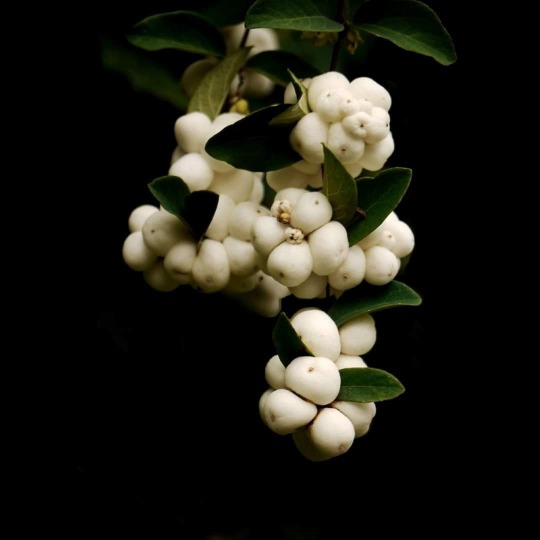
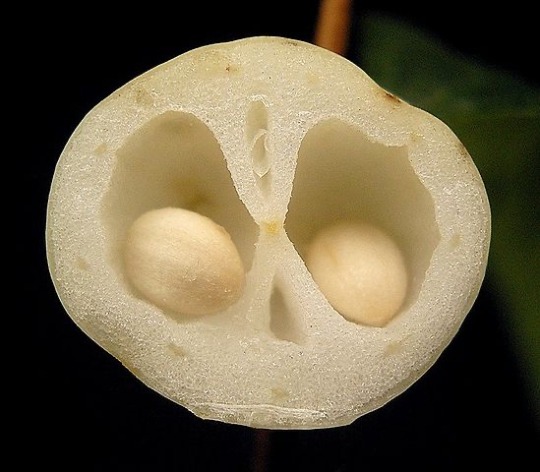
Snowberry (Symphoricarpos) is a christmas botanical that truly embodies the spirit of winter with its bright white berries. This genus of cold hardy and drought resistant shrubs is related to the honeysuckle family and native to North and Central America (with one species in China). Today it can be found as an ornamental shrub in plant nurseries and gardens across the world and is well loved in floristry —especially for the winter holidays and winter weddings.
The white berries are poisonous to humans if consumed in excess due to their saponin content so the plant was mainly used by indigenous peoples for medicine, as hair shampoo, and to poison water to stun fish and make them easier to catch. The fresh berries were rubbed on rashes, burns, and sores. The bark, root, and leaves were used externally to treat wounds snd as an eye wash as well as internally for fever and menstrual issues. It was treated as a disinfectant and was used as a wound wash, to remove external parasites, and the burned wood was used to cauterize wounds.
In modern medicine we’ve found the berries contain the alkaloid chelidonine normally found in poppies. It is an antidote to poisoning from anticholinergic herbs like belladonna, brugmansia, datura, and mandrake. Pretty cool! Other anticholinergic antidotes include snowdrops and narcissus.
In indigenous folk magic snowberry is considered very protective with the power to banish ghosts and evil spirits and counteract curses and spells. It can be worn or carried for protection and used in magic to encourage truthfulness. Many Native American tribes used it to protect babies and young children from ghosts —either as a charm by their cradles or the wood itself used to make the cradle. It was also used to protect children when ill, especially for fevers.
Sources: Native American Ethnobotany Database, PFAF, Wikipedia, and ethnobotanist Nancy J. Turner.
#bane folk#poisonous plants#poison path#snowberry#symphoricarpos albus#symphoricarpos#ethnobotany#native plants
62 notes
·
View notes
Text
DID YOU KNOW THAT INDIGENOUS LANGUAGES ARE SO EMBEDDED IN THEIR ENVIRONMENTAL CONTEXT THAT TONS OF INFORMATION ABOUT THE ENVIRONMENT ARE ENCODED IN THEM
AND WHEN WESTERN COLONIZERS CAME AND TRIED TO STUDY THE NATURE THEY LOST INSANE AMOUNTS OF INCREDIBLY VALUABLE KNOWLEDGE BY TREATING INDIGENOUS GROUPS AS RESEARCH SUBJECTS RATHER THAN COLLABORATORS
AND DID YOU KNOW THESE LANGUAGES ARE GOING EXTINCT BUT THEYVE CREATED A DATABASE WITH OVER 200 LANGUAGES TO HELP PEOPLE LEARN THEM AND KEEP THIS KNOWLEDGE ALIVE
2 notes
·
View notes
Photo


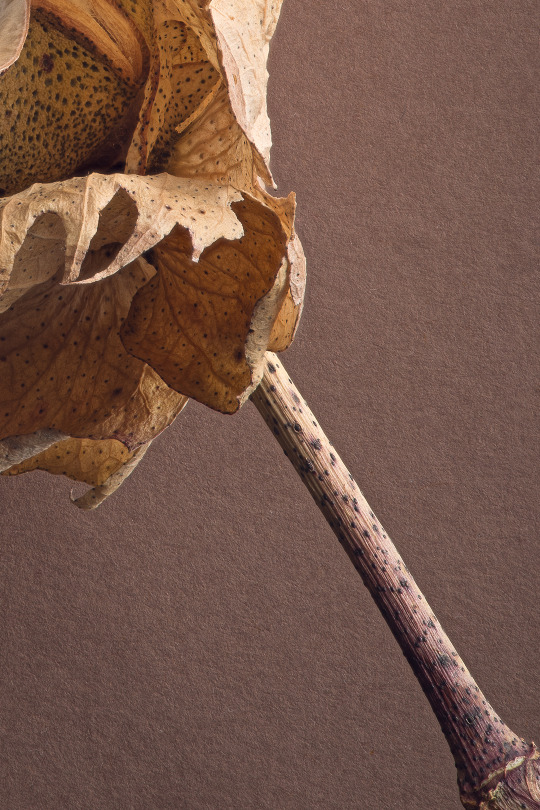
Gossypium barbadense is one of the species of cotton grown agriculturally in the modern world where it now grows throughout though it originated in Ecuador and Peru. Left to grow beyond the short cycle it sees in cultivation, this species can turn into a small and slender tree which produces showy but short-lived flowers and later bolls of cotton.
Though accounting for around 1/20 of the world’s cotton, the trade names ‘pima’ and ‘Egyptian’ cotton are well-known. Cultivars of G. barbadense are typically Long Staple or Extra Long Staple (I even created and measured staples of this boll’s fiber to check!) which allows them to make fine thread used in high thread count textiles and to create strong cord which has for one thing has been used in auto tires.
It is unlikely that this has remained a pure species as it’s been used by humans for longer than 6,000 years and cotton species in proximity can easily interbreed with one another. Some interbreeding was likely deliberate as well, considering for example that the Hawaiian cotton Gossypium tomentosum was bred with commercial species to convey disease and pest resistance.
G. barbadense has a noteworthy characteristic in having a single large and prominent extrafloral nectary on the underside of its leaves where it produces a visible (and pretty tasty) bead of nectar. These sorts of nectar sources are not intended to attract pollinators but instead usually draw in insects like ants or wasps which will defend the plant as a food source.
While many cotton species have further value for their seed oil, G. barbadense produces too much gossypol, a chemical which in its seeds which renders its oil unsuitable for consumption. Interestingly, gossypol also is known to be an antimalarial compound and has been investigated as a male contraceptive, though in the modern day is only being considered as an alternative to vasectomy.
#cotton#gossypium#barbadense#species#cultivation#agriculture#egyptian cotton#pima cotton#ethnobotany#herbarium#postfloral#carpology
53 notes
·
View notes
Text
Tea Time: Kentucky Coffeetree
Learning to identify Kentucky coffeetree in the winter brings you one step closer to making a coffee-like (albeit caffeine-free) beverage from its seeds. Humans have a long history of occasionally using the “beans” of Gymnocladus dioicus to make this tisane, which explains common names like coffeetree, American coffee berry, and coffeenut. The process is a bit time consuming, and the end result…

View On WordPress
#Botany#coffee#ethnobotany#Fabaceae#foraging#fruits#Gymnocladus dioicus#Kentucky coffeetree#legumes#reviews and recommendations#seeds#Tea Time#tisane#tree fruits#Trees#winter
35 notes
·
View notes
Text
Winter virus season is here...
...and with it, folks who come up with bizarre and ineffective herbal treatments for respiratory infections. It’s important to remember that just because a plant was used medicinally historically does not mean it’s effective. Sometimes, traditional medicinal plants can even be unsafe, and in ways our ancestors wouldn’t recognize - it was near impossible for people to document causes of cancer without long-term, complex studies like are used today. Many traditional medicinal plants are carcinogenic, including comfrey, birthwort, goldenseal, etc.
I really love this interview with Dr. Rosalyn LaPier, an Indigenous ethnobotanist and member of the Blackfeet Tribe of Montana and Métis, which mentions this issue. As she says, we need to remember the context of historical use of herbal medicines. She points out that, “[Our grandmothers] would never say that a particular plant cures a particular issue. They would almost always say, ‘This will help the symptoms of this particular thing.’” She goes on to say that our grandmothers would also stress exercise, sleep, and eating healthy - you can’t cheat with herbs! There’s no quick fix for health.
Dr. LaPier considers it tantamount to medical malpractice when herbalists suggest to people that an herbal remedy can “cure” a disease or otherwise do something it can’t. I’ve seen this crop up a lot in wildcrafting and foraging social media groups, and I think it’s something we all need to be careful to correct.
Wishing you a peaceful and healthy winter season!
94 notes
·
View notes